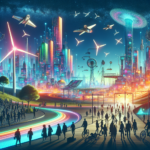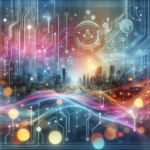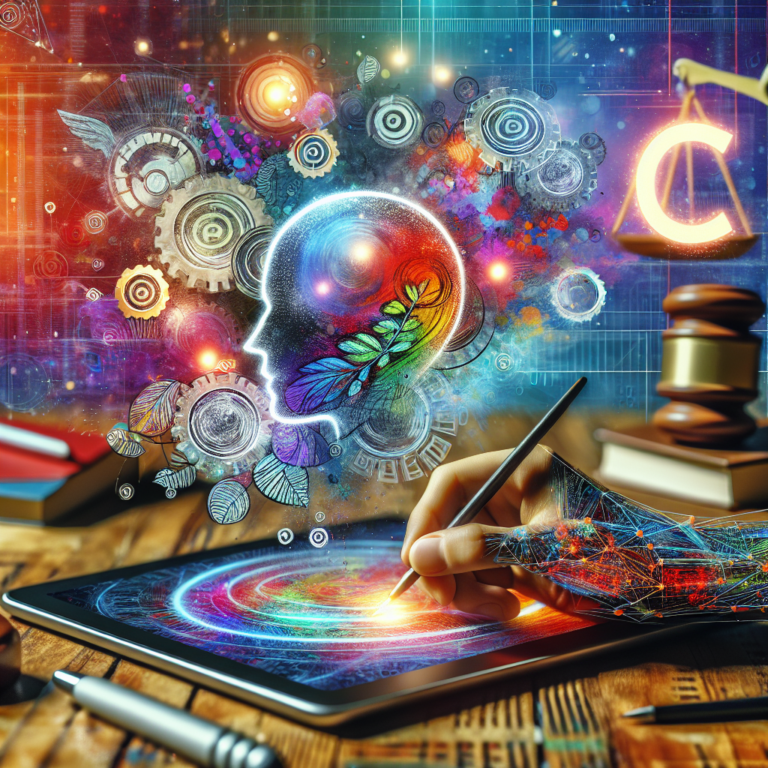Understanding AI Copyright Protection: A New Era for AI-Generated Content
The U.S. Copyright Office has made groundbreaking announcements regarding AI Copyright Protection. In its recent update, it clarified that certain types of AI-generated works can indeed receive copyright, but only if there is substantial human contribution involved in their creation.
Key Insights from the Latest Copyright Office Report
The Copyright Office published a document titled “Copyright and Artificial Intelligence, Part 2: Copyrightability.” This detailed report sheds light on how AI-generated content integrates with existing copyright law. As part two of a broader examination, it aims to clarify the intersection of copyright and artificial intelligence.
While AI significantly alters creative processes, human creativity retains its essential role in copyright law and intellectual property rights. The report reassures businesses that their brands and intellectual property will remain protected, even as they utilize AI-generated content in their workflows.
Background Context on Copyright and AI
In earlier instances, the Copyright Office revoked a copyright attributed to an artist for an AI-assisted graphic novel called “Zarya of the Dawn.” This incident generated confusion among artists about the copyright status of AI-generated creations. However, recent developments indicate a shift toward valuing human creativity over purely machine-generated outputs.
A notable voice in this conversation, Kris Kashtanova, the artist involved in the previous controversy, welcomed this clarification. She expressed that recognizing AI-generated content as potentially copyrightable is a vital advancement for creative professionals engaging with AI technologies.
Copyright Eligibility Criteria for AI-Generated Works
The Copyright Office specifies distinct conditions under which AI-generated content can claim copyright protection:
- Human Contribution: When human-authored work is incorporated into the AI output.
- Significant Modification: If a human substantially alters or organizes the material produced by AI.
- Creative Expression: When human contributions are expressive and creative enough to meet copyright requirements.
The report further emphasizes that employing AI tools in the creative process does not bar a work from earning copyright. Here are several ways AI can assist while maintaining copyright eligibility:
- Refining and editing text, images, or music.
- Creating drafts or initial ideas for human refinement.
- Functioning as a creative assistant while the human author finalizes the output.
The Essential Role of Human Authorship
While AI serves as a vital resource for creators, the essence of authorship remains clear. Simply giving prompts to an AI system usually does not suffice to establish copyright. The Copyright Office has clarified that these prompts act mostly as instructions or ideas and often lack the expressive quality necessary for copyright protection.
As a result, an image solely produced by a text-to-image AI service wouldn’t qualify for copyright independently. However, if that image is incorporated into a human-authored article or another creative work, it may be eligible for protection.
Similarly, within the realm of AI video generation, creating a video clip solely based on a description would not meet copyright criteria. However, if a human creatively edits multiple AI-generated clips into a coherent work, that could be eligible for copyright protection.
Changes in Copyright Practices
The Copyright Office has also stated that it currently will not recommend any legislative changes. This decision comes after extensive public feedback, which included over 10,000 comments. The Office believes that existing copyright law efficiently addresses the complexities introduced by AI-generated content.
Despite these findings, the Office intends to continue monitoring technological developments and legal interpretations to determine if future changes are needed. Shira Perlmutter, the register of copyrights and director of the U.S. Copyright Office, emphasized the need to uphold human creativity at the core of copyright. She noted that extending copyright protection to works primarily created by machines could undermine the fundamental aims of copyright law.
What This Means for the Future of AI and Copyright
As attention grows around this report, creators and enthusiasts working with AI technologies express a sense of optimism. Many view it as a landmark victory for AI filmmakers and artists, reinforcing the concept that human manipulation and transformation of AI-generated content can secure copyright protections.
AI filmmakers like Nem Perez regard the Copyright Office’s recent position as an endorsement of their creative processes. They believe that acknowledging human contributions in AI-driven works is vital for fostering innovation in creative industries.
3D animator Robert William Bradshaw echoed these sentiments, calling the recent clarification a significant victory for creators. He feels this decision legitimizes AI-assisted artistry while protecting intellectual property rights in a swiftly evolving technological landscape.
What Lies Ahead
Though current insights into copyright and AI are promising, the discussion surrounding AI authorship is far from over. Courts and policymakers may face challenges as AI capabilities evolve. Future legal clarifications may prove necessary to keep pace with technological advancements.
One key takeaway remains unchanged: AI serves as a powerful tool for enhancing creative works, but human authorship is essential for claiming copyright protection. This framework aligns with historical adaptations of copyright law as new technologies emerge, ensuring that creativity remains safeguarded in all forms. 🖌️




0 Comments